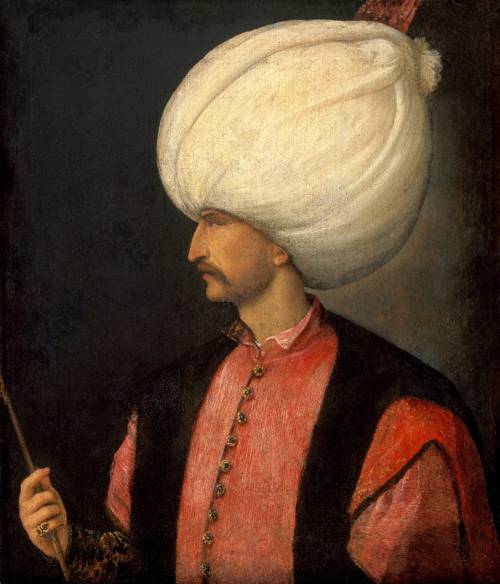
FAQ About Suleiman the Magnificent

Who was Suleiman the Magnificent?
Suleiman the Magnificent, also known as Suleiman I, was the tenth and longest-reigning Sultan of the Ottoman Empire, who ruled from 1520 to 1566. He is best known for his significant military conquests, extensive legal reforms, and contributions to the arts and culture, which had a lasting impact on both Islamic and European history.

What were Suleiman the Magnificent's major military conquests?
Suleiman the Magnificent led numerous military campaigns that expanded the Ottoman Empire's territory to its greatest extent. Among his most notable conquests were the capture of Belgrade (1521), the island of Rhodes (1522), and most famously, the victory at the Battle of Mohács (1526), which led to the Ottoman control of Hungary. He also laid siege to Vienna in 1529, though the city did not fall to his forces.

What were some of Suleiman the Magnificent's legal reforms?
Suleiman the Magnificent implemented comprehensive legal reforms that standardized and codified laws in the Ottoman Empire. These reforms, known as the Kanuns of Suleiman, addressed issues such as taxation, criminal law, and property rights. His efforts earned him the title 'Kanuni,' meaning the Lawgiver, in the Islamic world.

How did Suleiman the Magnificent influence culture?
Suleiman the Magnificent was a great patron of the arts and culture, fostering a golden age in Ottoman architecture, literature, and the arts. He supported the works of prominent architects like Mimar Sinan, who designed iconic buildings such as the Suleymaniye Mosque. Under his patronage, the empire saw a flourishing of artistic expression and cultural accomplishments that were admired across both the Islamic world and Europe.

Why is Suleiman I called 'the Magnificent'?
Suleiman I earned the epithet 'the Magnificent' due to his grand accomplishments as a ruler, which included significant territorial expansion, influential legal reforms, and the encouragement of a cultural renaissance in the Ottoman Empire. His leadership and achievements were widely respected, both contemporarily and in later histories, solidifying his reputation as a formidable and distinguished emperor.

What role did Suleiman's wife, Hürrem Sultan, play in his reign?
Hürrem Sultan, also known as Roxelana, was a highly influential figure during Suleiman's reign. She was Suleiman's wife and played a significant role in the political dynamics of the court. Known for her intelligence and strategic acumen, she wielded considerable power, advising the Sultan on state matters and even engaging in diplomatic correspondence. Her influence marked a unique chapter in the role of women within the Ottoman political sphere.

What was Suleiman the Magnificent's relationship with the arts?
Suleiman the Magnificent was an avid patron of the arts, overseeing a cultural renaissance within the Ottoman Empire. He supported poets, artists, and architects, contributing to a flourishing of creative expression during his reign. One of his most notable contributions was sponsoring the work of the architect Mimar Sinan, who developed many of the Ottoman Empire's architectural masterpieces, such as the Suleymaniye Mosque.

How did Suleiman the Magnificent impact European history?
Suleiman the Magnificent had a profound impact on European history through his military campaigns, political influence, and legal reforms. His military expeditions against European states altered the political landscape, particularly in Eastern and Central Europe. His legal reforms inspired European scholars and diplomats, broadening their understanding of governance. Additionally, Suleiman's court became a cultural hub, facilitating the exchange of ideas between Europe and the Islamic world.

What contributions did Suleiman the Magnificent make to architecture?
Suleiman the Magnificent made significant contributions to architecture, most notably through his patronage of the renowned architect Mimar Sinan. Sinan designed many grand structures during Suleiman's reign, such as the iconic Suleymaniye Mosque in Istanbul. These buildings are celebrated for their innovative design and aesthetic beauty, and they continue to be admired as architectural masterpieces today.

How long did Suleiman the Magnificent rule the Ottoman Empire?
Suleiman the Magnificent ruled the Ottoman Empire for 46 years, from 1520 until his death in 1566. His reign is noted for extensive territorial expansion, significant legal reforms, and a flourishing of culture and the arts, marking a period often described as the apex of the Ottoman Empire's power and influence.

What influence did Suleiman the Magnificent have on Islamic law?
Suleiman the Magnificent significantly influenced Islamic law through his legal reforms known as the Kanun. These were sets of secular laws that complemented Sharia (Islamic law), covering areas like criminal justice, taxation, and land ownership. Suleiman's reforms harmonized laws across the vast Ottoman Empire, which enhanced legal consistency and stability, underscoring his role as 'the Lawgiver.'

How did Suleiman the Magnificent's policies affect trade in the Ottoman Empire?
Suleiman the Magnificent's policies greatly enhanced trade within the Ottoman Empire. Through military conquests and diplomatic agreements, Suleiman secured strategic trade routes and established Ottoman dominance over key cities. This control, coupled with stable governance, fostered a thriving trade environment that attracted merchants from across Europe and the Islamic world, thereby boosting the empire's economy.

What challenges did Suleiman the Magnificent face during his reign?
During his reign, Suleiman the Magnificent faced several challenges, including persistent military conflicts with European states, rising internal tensions among different ethnic and religious groups within the empire, and succession issues. Notable military challenges included battles against the Habsburg and Safavid dynasties. Despite these challenges, Suleiman's strategic acumen and legal reforms helped maintain the empire's stability and growth.

Who succeeded Suleiman the Magnificent after his death?
After Suleiman the Magnificent's death in 1566, he was succeeded by his son, Selim II. Known as Selim the Sot or Selim the Blonde, his reign marked a period of decline in the empire's military and administrative potency, largely contrasting with his father's era of celebrated prosperity and expansion.

How did Suleiman the Magnificent die?
Suleiman the Magnificent died on September 6, 1566, during the Siege of Szigetvár in Hungary. He passed away due to natural causes, specifically from a probable heart attack, in the battlefield camp. His death was initially kept secret to maintain morale among the troops until the siege concluded successfully.

Did Suleiman the Magnificent have any notable interactions with European leaders?
Yes, Suleiman the Magnificent had significant interactions with various European leaders that shaped diplomatic relations of the time. He maintained correspondence with figures such as Francis I of France, forming a Franco-Ottoman alliance against the Habsburgs. His diplomatic engagements extended Ottoman influence and facilitated crucial political and trade alliances with European powers.

What was Suleiman the Magnificent's impact on the legal system of the Ottoman Empire?
Suleiman the Magnificent had a lasting impact on the legal system of the Ottoman Empire by codifying a series of secular laws known as the Kanun. These laws complemented the existing Sharia laws and addressed gaps in the legal system. Suleiman's reforms standardized legal practices across the empire, contributing to more consistent and equitable governance.

How did Suleiman the Magnificent's reign affect the Ottoman Empire's cultural development?
Suleiman the Magnificent's reign notably advanced the cultural development of the Ottoman Empire. He was a patron of the arts and culture, supporting significant architectural projects, literature, music, and visual arts. This support led to a cultural flowering that integrated diverse influences and established the Ottoman Empire as a distinguished center of art and intellectual achievement during the 16th century.

What is the legacy of Suleiman the Magnificent in modern times?
The legacy of Suleiman the Magnificent in modern times is reflected through his substantial contributions to the Ottoman legal system, culture, and architecture. His reign is often regarded as the apex of the Ottoman Empire's power. Modern Turkey still honors his achievements, and his life's work remains influential in discussions about governance, law, and cultural development. Structures he commissioned continue to attract attention, symbolizing the enduring legacy of his architectural patronage.

What was the significance of the Siege of Vienna during Suleiman's reign?
The Siege of Vienna in 1529 was significant during Suleiman's reign as it marked the height of Ottoman territorial expansion into central Europe. Although the siege was unsuccessful, it represented the peak of the empire's military might and posed a serious threat to European stability at the time. The event highlighted the strategic ambitions of Suleiman and exemplified the ongoing conflict between the Ottoman Empire and European powers.
